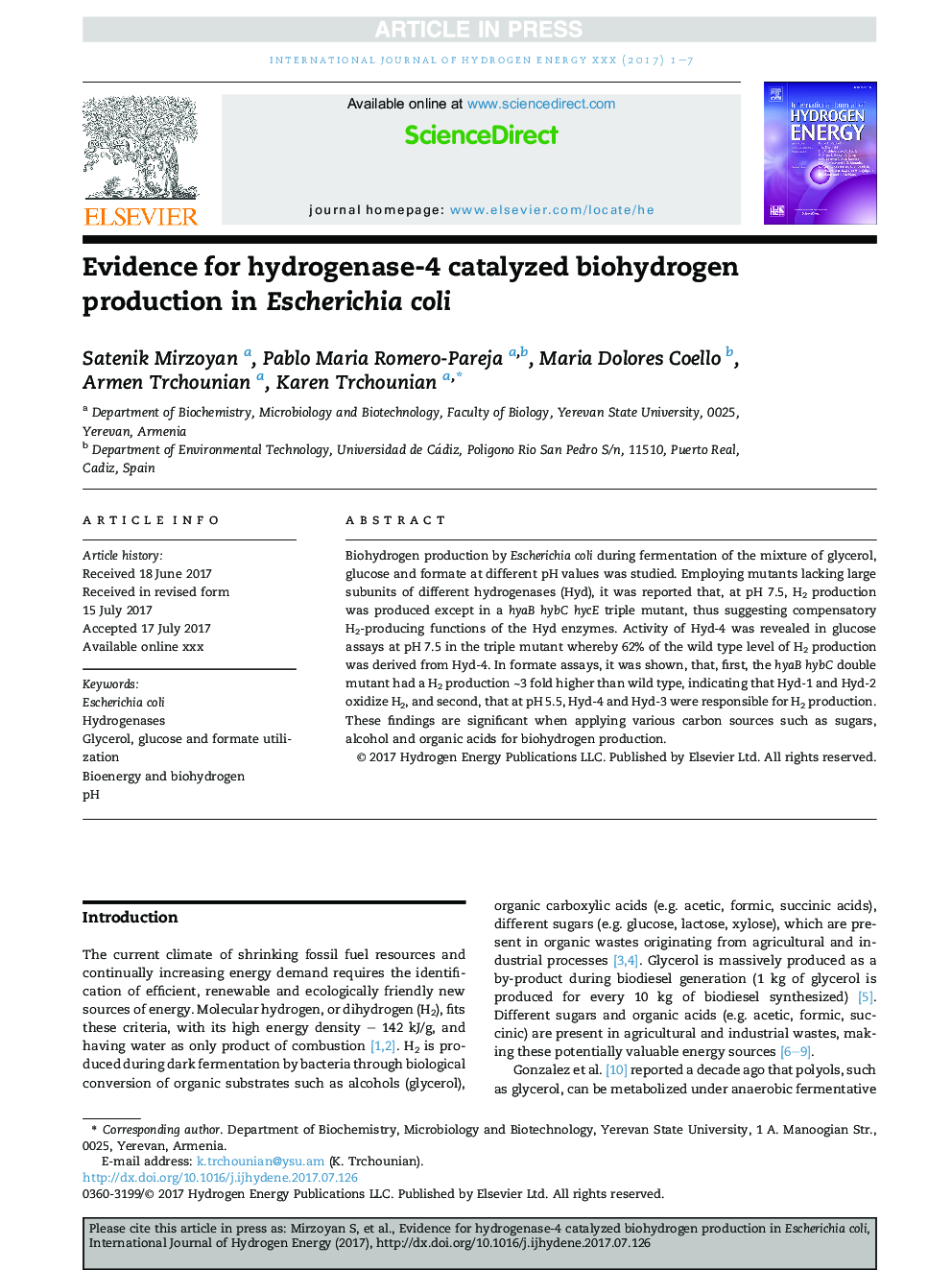| Article ID | Journal | Published Year | Pages | File Type |
|---|---|---|---|---|
| 5145885 | International Journal of Hydrogen Energy | 2017 | 7 Pages |
Abstract
Biohydrogen production by Escherichia coli during fermentation of the mixture of glycerol, glucose and formate at different pH values was studied. Employing mutants lacking large subunits of different hydrogenases (Hyd), it was reported that, at pH 7.5, H2 production was produced except in a hyaB hybC hycE triple mutant, thus suggesting compensatory H2-producing functions of the Hyd enzymes. Activity of Hyd-4 was revealed in glucose assays at pH 7.5 in the triple mutant whereby 62% of the wild type level of H2 production was derived from Hyd-4. In formate assays, it was shown, that, first, the hyaB hybC double mutant had a H2 production â¼3 fold higher than wild type, indicating that Hyd-1 and Hyd-2 oxidize H2, and second, that at pH 5.5, Hyd-4 and Hyd-3 were responsible for H2 production. These findings are significant when applying various carbon sources such as sugars, alcohol and organic acids for biohydrogen production.
Keywords
Related Topics
Physical Sciences and Engineering
Chemistry
Electrochemistry
Authors
Satenik Mirzoyan, Pablo Maria Romero-Pareja, Maria Dolores Coello, Armen Trchounian, Karen Trchounian,
